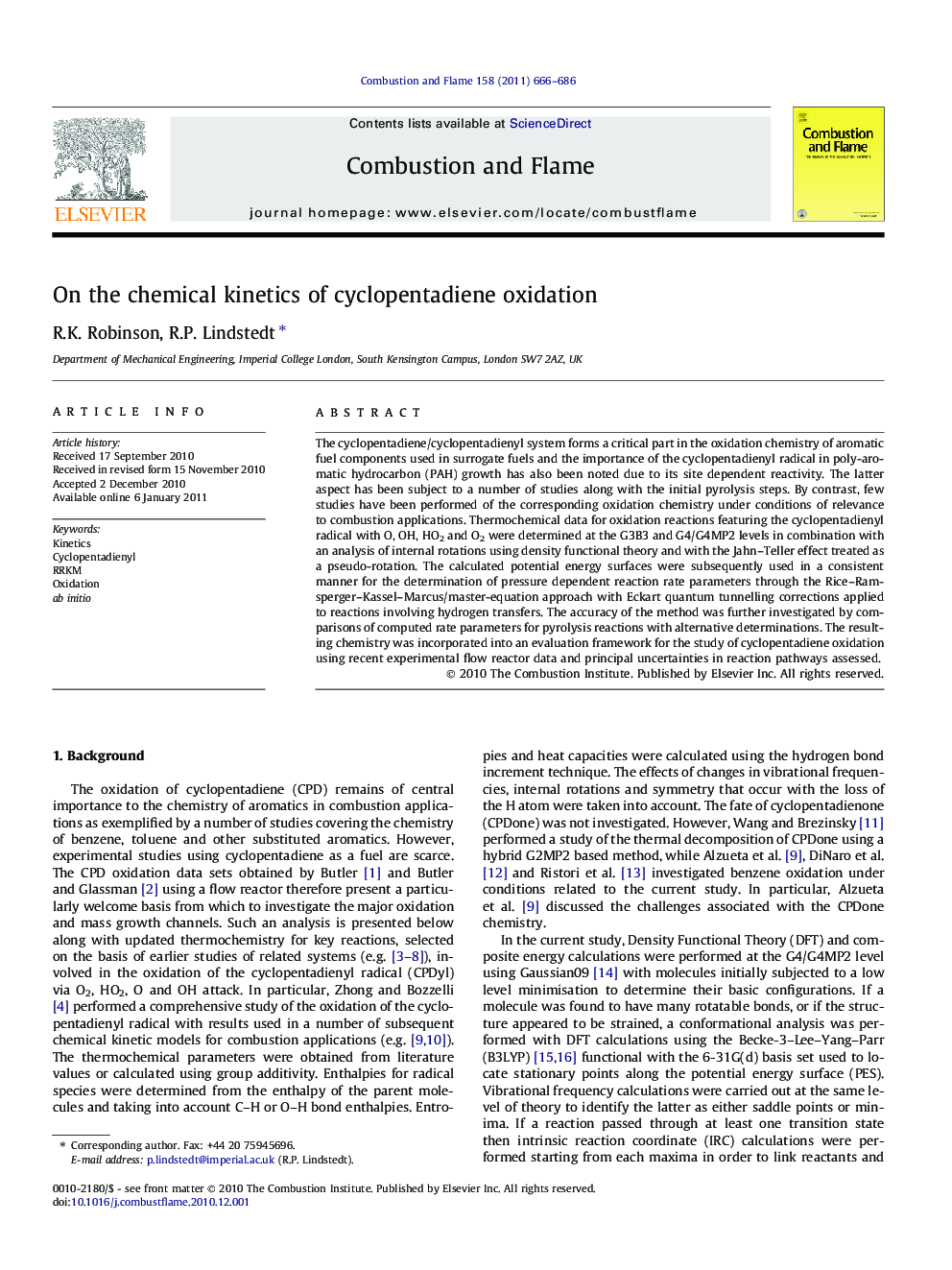| Article ID | Journal | Published Year | Pages | File Type |
|---|---|---|---|---|
| 166639 | Combustion and Flame | 2011 | 21 Pages |
The cyclopentadiene/cyclopentadienyl system forms a critical part in the oxidation chemistry of aromatic fuel components used in surrogate fuels and the importance of the cyclopentadienyl radical in poly-aromatic hydrocarbon (PAH) growth has also been noted due to its site dependent reactivity. The latter aspect has been subject to a number of studies along with the initial pyrolysis steps. By contrast, few studies have been performed of the corresponding oxidation chemistry under conditions of relevance to combustion applications. Thermochemical data for oxidation reactions featuring the cyclopentadienyl radical with O, OH, HO2 and O2 were determined at the G3B3 and G4/G4MP2 levels in combination with an analysis of internal rotations using density functional theory and with the Jahn–Teller effect treated as a pseudo-rotation. The calculated potential energy surfaces were subsequently used in a consistent manner for the determination of pressure dependent reaction rate parameters through the Rice–Ramsperger–Kassel–Marcus/master-equation approach with Eckart quantum tunnelling corrections applied to reactions involving hydrogen transfers. The accuracy of the method was further investigated by comparisons of computed rate parameters for pyrolysis reactions with alternative determinations. The resulting chemistry was incorporated into an evaluation framework for the study of cyclopentadiene oxidation using recent experimental flow reactor data and principal uncertainties in reaction pathways assessed.
